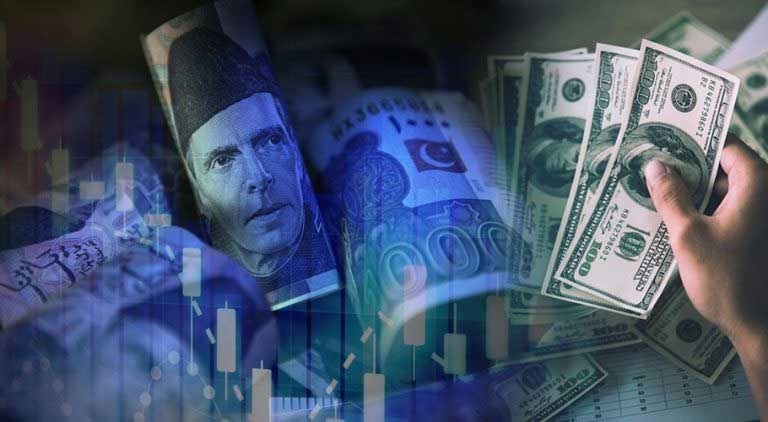KARACHI: Pakistani rupee registered the first weekly gain in three weeks against the US dollar with an uptick of 0.16 percent in the interbank market.
According to the figures shared by the central bank, the dollar opened at Rs285.62 in the interbank market on Monday and closed at Rs285.15 on Friday, showing a minor gain of Re0.47. During the preceding two weeks, the local unit depreciated by 0.19 percent and 0.53 percent against the greenback in the interbank market.
During the current fiscal year 2022-23, Pakistani rupee has lost Rs79.28 against the US dollar in the interbank, while it plummeted by Rs58.72 against the greenback in the current year.
However, in the open market, the rupee was traded at 302-312 a dollar against 295-300 per dollar a week earlier. Market talks suggest that the widening difference between interbank and open market rates is due to the prevailing economic uncertainty. The local currency demonstrated a mix of stability and volatility against the US dollar throughout the week. The currency experts attributed these fluctuations to political tensions, import demands, and the delay in revival of the IMF programme.
According to a report by Bloomberg, the rupee is likely to rebound to 244 per US dollar after October 2023 if the political turbulence passes as elections would help restore order. However, the currency will likely fall further if Chairman PTI Imran Khan and the government continue to clash and/or if the IMF chooses not to provide loans, the report warned.
“Pakistan’s rupee is undervalued by about 14 percent, according to our model,” Ankur Shukla, South Asia Economist for Bloomberg Economics said. He attributed the depreciation to the delays in aid from the International Monetary Fund and clashes between the government and opposition leader Imran Khan. According to the estimations put forth by Bloomberg Economics, the fair value of PKR is around 244. This fair value measures the change in the real effective exchange rate required to bring the current account deficit in line with long-term trends.
Currency analysts attribute this depreciation to the heightened demand for the US dollar in relation to import and other corporate payments. Additionally, concerns surrounding the ongoing International Monetary Fund (IMF) programme added pressure to the local currency. Experts say resumption of the IMF programme, which remains stalled since last year, is crucial for the debt-ridden economy.
Pakistan’s external financing pipeline appeared drying up without the IMF umbrella, as it received $8.1 billion in the first 10 months (July-April) of the current fiscal year 2022-23 against over $13 billion in the same period last year, showing a decrease of 38 percent. This implies a constant precarious position of the foreign exchange reserves despite tight import curbs.
On the other hand, the State Bank of Pakistan’s foreign exchange reserves experienced a decline of $119 million on a week-on-week basis, reaching $4.19 billion. – TLTP
Rupee shows uptick in interbank, fall in the open market




